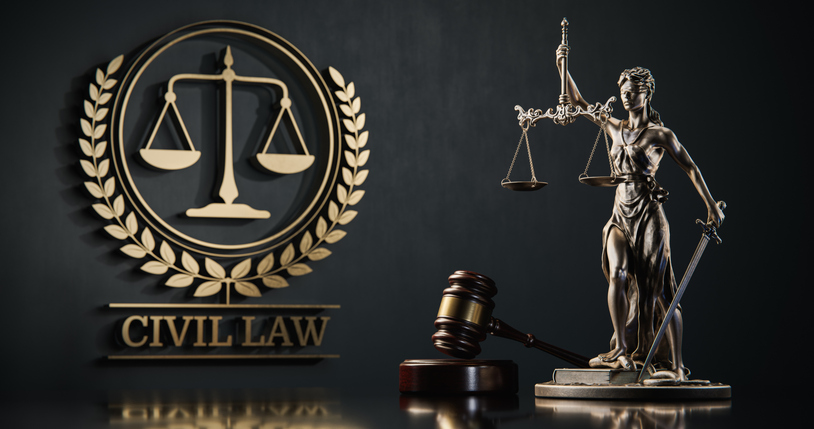Civil litigation is one of the broadest areas of law, covering disputes between individuals, businesses, and organizations. While criminal law addresses offenses against the state, civil litigation is about resolving private conflicts. Both the United States and Canada rely on similar principles of civil law, but there are key differences in how cases are filed, managed, and resolved. Understanding the basics can help you see where your situation fits—and why experienced legal guidance is essential.
What Falls Under Civil Litigation?
Civil litigation typically involves disputes where one party seeks compensation, enforcement of rights, or another form of relief rather than criminal penalties. Some of the most common types include:
-
Contract Disputes – Breach of contract is one of the most frequent reasons people go to civil court. This can involve anything from business agreements to service contracts or leases.
-
Property Disputes – Landlord–tenant disagreements, real estate boundary issues, or ownership claims fall into this category.
-
Employment Claims – Wrongful termination, wage disputes, or workplace discrimination are often resolved through civil litigation rather than criminal courts.
-
Business Litigation – Corporate conflicts, shareholder disputes, and cases involving unfair competition are complex civil matters.
-
Personal Injury Overlaps – Although often handled under personal injury law, cases like car accidents, slip-and-fall incidents, or product liability also fall under civil litigation.
Each of these categories requires different evidence, procedures, and legal strategies—but they share the same goal: resolving conflicts fairly under the law.
Civil Litigation in the U.S.: Key Features
The U.S. civil litigation system is known for its adversarial nature. Some defining features include:
-
Jury Trials: In many civil cases, either party can request a jury, which is less common internationally. According to the U.S. Courts, jury trials remain a hallmark of the American system.
-
Discovery Process: U.S. discovery rules are broad, allowing extensive fact-finding and evidence exchange between parties.
-
Costs: Each party typically pays its own legal fees unless a statute or contract says otherwise.
-
Damages: The U.S. is known for larger awards, especially in cases involving punitive damages designed to punish wrongdoing.
This system can make lawsuits lengthy, expensive, but also powerful for plaintiffs seeking significant compensation.
Civil Litigation in Canada: Key Differences
Canada’s system is similar in many respects but has some notable differences:
-
Limited Jury Use: Civil juries exist but are rare—most cases are decided by a judge. The Government of Canada notes that civil cases are usually resolved without juries, reflecting efficiency and judicial discretion.
-
Costs Awarded to the Winner: The losing party often pays a portion of the winning side’s legal costs, discouraging frivolous lawsuits.
-
Damages: Awards are generally lower than in the U.S., particularly in personal injury cases. In fact, the Canadian Supreme Court set a precedent in the “trilogy” cases—Andrews v. Grand & Toy Alberta Ltd., Thornton v. School District No. 57, and Arnold v. Teno (1978)—by capping non-pecuniary (pain and suffering) damages at approximately $100,000 (adjusted for inflation, now around $400,000). This makes multi-million-dollar pain-and-suffering awards common in the U.S. nearly impossible in Canada.
-
Discovery: Pre-trial discovery exists but is narrower in scope than in the U.S., reducing litigation costs.
These differences reflect broader policy choices—Canada emphasizes efficiency and discouraging excessive litigation, while the U.S. system leans toward broad access and strong remedies for plaintiffs.
Similarities Between the Two Systems
Despite differences, civil litigation in both countries shares core features:
-
Both rely on common law traditions (except Quebec, which follows civil law for private matters).
-
Both allow settlement at any stage of the case, often through mediation or negotiation. The American Bar Association highlights mediation as a common tool in both countries.
-
Both focus on fairness, evidence, and procedure, ensuring parties have a chance to present their case.
Whether in the U.S. or Canada, the litigation process is complex, technical, and full of procedural rules that can overwhelm individuals without legal training.
Why Legal Guidance Matters
Navigating civil litigation on your own—whether in Toronto or New York—can lead to costly mistakes. From understanding filing deadlines to gathering admissible evidence and knowing when to settle versus fight, the guidance of a civil litigation lawyer can make all the difference.
If you’re facing a dispute and need experienced representation in Ontario, Reach out today to ensure your rights are protected and your case is handled with skill.

